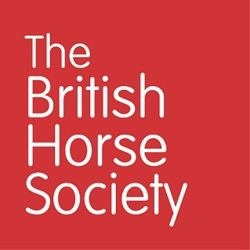There are two main types of devices, although some may combine elements of both types:
- Auditory: these imitate the sound of gunfire, birds’ distress calls, sirens, or a constant hum
- Visual: these replicate the visible appearance of humans, predatory species and sudden movements, which birds naturally fear.
Advice for equestrians
To begin with, try having a conversation with the owner of the land that the bird scarer is on to see if they can:
- Place the bird scarer to a different location further away from the road or bridleway
- Put some warning signs up to warn other riders and carriage drivers that a bird scarer is nearby so they can avoid or prepare for it.
You might want to make a complaint using the relevant legislation if devices do unfortunately cause problems.
- If you wish to make a complaint, it might be helpful to take some legal advice, as every case is individual, and there isn’t always a straightforward solution
- If you’re a BHS Gold member, you can contact the free legal advice helpline.
Please, also remember to report your experience of an incident to the BHS Access Team
02476 840515
- This helps us collect evidence of common incidents and work towards making positive changes for equestrians and their horses.
Advice around putting up bird scarers
The NFU has produced a Code of Conduct on the use and positioning of bird scarers. However, two of the key things you could do to keep horses and riders safe are:
- Avoid placing a bird scarer near a road, bridleway, or any other place you are aware that horses might pass close by.
- Put up warning signs. Incidents often occur because the rider or carriage driver is unaware of a bird scarer behind a hedge or out of sight; warning signs can help riders to prepare or avoid the route if necessary.
Relevant legislation
Firearms Act 1968
chevron-down
chevron-up
Requires a firearms certificate to be obtained if bird-scaring cartridges are used.
Environmental Protection Act 1990
chevron-down
chevron-up
Includes powers to deal with nuisance from auditory bird scarers.
Health and Safety at Work Act 1974 Section 3
chevron-down
chevron-up
Requires every employer (including self-employed) to do their work in a way that ensures, as far as reasonably practical, individuals not in their employment don’t have their health and safety put at risk.
Town Police Clause Act 1847
chevron-down
chevron-up
Covers the discharging of firearms where the public is endangered.
Air Navigation Order 1980
chevron-down
chevron-up
Requires the consent of the Civil Aviation Authority to fly kites or balloons (visual scarers) above 60m (200ft).
Wildlife and Countryside Act 1981
chevron-down
chevron-up
Protects wild birds and prohibits scarers likely to injure wild birds.
- General licences are issued by Natural England and the Welsh Assembly Government (WAG), which allows authorised persons (including owners and occupiers of land and their representatives) to take and kill certain species regarded as ‘pest birds’.
- Some other species can only be killed under a different licence issued by Natural England and the Welsh Assembly Government (WAG).
